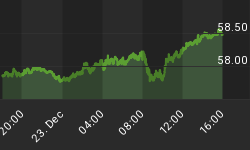Hyman Minsky, Ph.D. (1919 - 1996), was an economist and professor at Washington University in St. Louis, but stayed in New York during last 10 years of his life. A few years ago, almost no one heard of him, until the current credit crisis. I first heard of him last year from an interview given by Jeremy Grantham of GMO, who was also only aware of him two years ago. With the recent subprime mess, suddenly his theory becomes a lot more pertinent and popular these days.
Minsky's research focused on understanding and explanation of financial crisis. Minsky claimed that in prosperous times, when corporate cash flow rises beyond what is needed to pay off debt, a speculative euphoria develops, and soon thereafter debts exceed what borrowers can pay off from their incoming revenues, which in turn produces a financial crisis. As a result of such speculative borrowing bubbles, banks and lenders tighten credit availability, like right now, even to companies that can afford loans, and the economy subsequently contracts.
Minsky's core model is known as "Financial Instability Hypothesis" (FIH), which simply declares stability is inherently destabilizing. "A fundamental characteristic of our economy," Minsky wrote in 1974, "is that the financial system swings between robustness and fragility and these swings are an integral part of the process that generates business cycles."
Disagreeing with many mainstream economists, he argued that these swings, and the booms and busts that can accompany them, are inevitable in a free market economy, unless government steps in to control them, through regulation, central bank action and other tools. He opposed the deregulation that characterized the long 18 years of Greenspan era. No wonder we are hearing a lot of talks about regulations recently.
Minsky broke down the process from stability to instability into three types of debt phases: hedge, speculative, Ponzi.
Hedge phase describes that buyer's cash flows cover interest and principal payments for borrowers who obtains a debt to buy an asset. This way, the debt is self-liquidating, fully hedged, so it is a stabilizing factor in this economic phase.
Speculative phase is a step further on the risk side. In this phase, cash flows cover only interest payments, but not enough to amortize the principal. Obviously, this is less stabilizing since borrowers (or in this case on its way to be speculators) are betting on: interest rate is not going up, and the value of the collateral will not decline. The longer an economy is stable, the more incentive to speculate, and the more speculative borrowers become.
Ponzi phase is the last phase toward the end of the bubble. In this phase, cash flows cover neither interest rate nor principal, and it all depends on rising asset prices to keep the borrowers afloat. In the mortgage market, it becomes option-ARM, a negative amortization loan, or subprime with no ability of paying back, and all the MBS. In other fixed income market, it becomes CDO, SIV, leveraged loans which private equity firms use for their leveraged buyouts, relying on their acquired business to maintain historical high revenue growth and profit margin.
Different than speculative phase, this whole phase is hinged on asset price (or operating profit margin for private equity firms) to go up. They can't just stay flat or not decline, they have to go up, otherwise their investments will get wiped out. They are also betting on future buyers will buy these overvalued assets from them, assuming more new buyers will buy the same assets at even higher price from future buyers. It is an escalation of buying high and selling even higher.
In these three step process, the tendency of markets becomes more risky as they become seemingly more stable. The longer the markets seem to be stable, or appear more secure, the more risky and unstable they become. The false hope of security leads investors to extrapolate stability into the distant future.
In the Ponzi phase, the rising asset prices become a self-fulfilling prophecy. As more people enter the market and become speculators, they drive up the value of the collateral. In turn, they can borrow more to buy more assets to drive up the value further. Eventually, financial systems are inherently susceptible to destructive bouts of speculation. Once the asset prices decline, as presently in the housing market, suddenly everyone realizes that the emperor has no clothes.
Additionally, complex financial derivative products contribute and accelerate this destabilizing process. Minsky indicated that banking is a profit-seeking business, "Bankers are merchants of debt who strive to innovate in the assets they acquire and the liabilities they market". Well said. Investment banking is basically to "innovatively" package and securitize assets acquired, and then to market and sell them to unsuspicious investors at profits.
However, I am sure in 1970s, Minsky would have never imagined the level of "innovation" from investment banks by creating complex financial instruments such as mortgage backed securities (MBS), collateralized debt obligations (CDO), and CDO tranches, let alone CDO-squared (tranches from CDO tranches), CDO-cubed (tranches on top of CDO-squared) or the most abusive credit default swaps (CDS). The more layer of derivatives on top of each other, the more sensitive they are to any tiny change of the underlying variables and assumptions. No wonder many AAA rated CDOs have only 50% rate of recovery, and everything else including AA and single A is pretty much all wiped out.
There is no doubt that we are in the reverse Minsky process, with asset prices falling and collateral being wiped out, risk premiums moving to astrosphere, deleveraging everywhere, lack of lending, no refinancing, and economy contracting in jobs, income and spending. We just hope that hyperinflation like 1970s doesn't join this ongoing party at the worst possible time, and also that the present reverse Minsky process is not going to be as long as his forward process.















